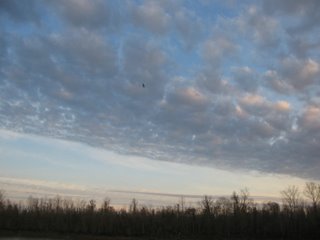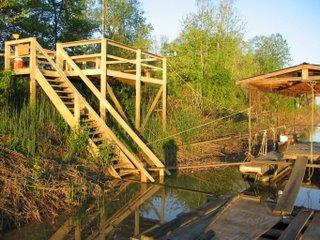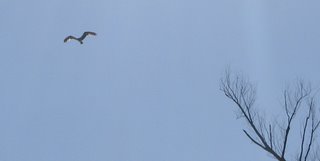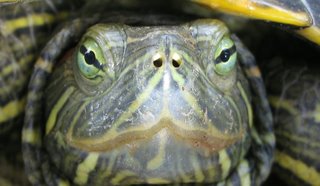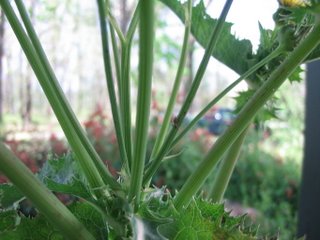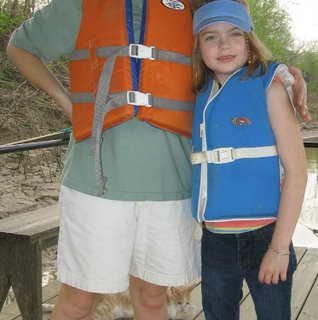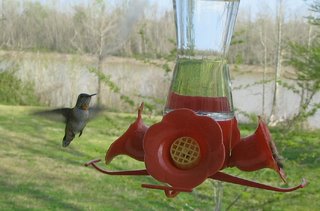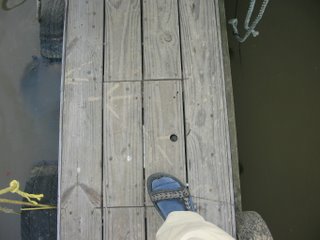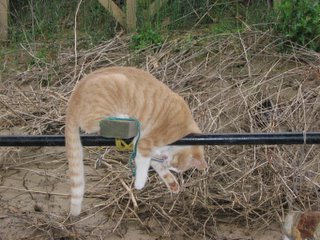
I have a little story to tell about something that happened a long time ago. It takes a little setting up so bear with me a moment, please. It was a summer night in 1972. All of us were fishing at night because it was June and you had to fish at night to make a living. If you baited in the daytime the small fish would take all the bait and you would catch nothing. The only time larger fish would bite was at night, so we fished five nights a week, usually excluding Saturday and Sunday. This particular time, however, I needed to make a few extra dollars and so I chose to make a run on Saturday night, even though no one else would be out there on the lake (there usually would have been at least ten other boats to help if you had trouble). The landing we used was the second ramp at Myette Pt. If you go there now you only see a ramp going down the levee to the water, but then it was where we all kept our boats tied up. The fishing community was still living close by just across the levee. As I left the landing before sunset to catch bait, I noted that the water was pretty low in the canal that goes out to the lake. The canal is about 40 feet wide and stays pretty shallow in the summer. There was probably about two feet of water, so I had no trouble getting out of the canal into the lake. I had good luck that night. When I got to the lines there was already a good bunch of fish on them from the bait left on from the previous night. I ran and baited the thousand hooks and by the time I finished one more run, at about 2:30 in the morning, I looked at my wellbox and decided I had enough fish to get the extra money I needed. So I headed home. When I got back to the entrance of the mile-long canal that would take me back to the levee, surprise, surprise, the water had fallen about 18 inches and there was no water in the canal. I say no water but that’s not quite true, you know how these little mud-bottomed canals that get frequent outboard use always have a little channel right down the middle? The propellers of the outboards that run in low water make this little shallow ditch. So, I had a boat full of fish that I really needed, was a mile from my truck, and the canal had barely enough water to float the boat in the five-foot wide, five-inch-deep little ditch, but not enough to run the motor. I was going to have to get out, raise the motor, and pull the boat back up the canal with the rope over my shoulder. We always used knee boots to run our lines, but you can’t walk in that kind of mud with knee boots – they just keep wanting to stay where you just were. So, off came the boots and into the mud bare footed. The boat would just barely float, but it did, so up the canal we went. A little after I got overboard, my headlight started to go dim, but, no problem, because at that time there was a small light on a pole on the levee at the far end of the canal , about a half a mile away. By using the shine from the little light on the water I could see well enough to keep the boat inside the little ditch. So I turned my headlight off. Now, realize that this is Louisiana and we have a wonderful array of creatures that come out at night and feed on whatever they can find. My canal, normally 40 feet wide, was now five feet wide and five inches deep, and all the fish, shrimp, crabs, salamanders, frogs and other things that had been in the big canal were now crammed into the little ditch – with me. As I went up the ditch, pulling the boat, I could see lots of movement in the water ahead of me, but you expect that in Louisiana at night. Maybe it was 3:00 a.m. and I was tired and not thinking about much except getting to the levee, but it took me a long time to notice that things were bumping against my legs every now and then. I finally turned my headlight back on and looked down and realized I had stepped on a big watersnake and half-buried it in the mud and it was thrashing around trying to get out of the mud and was thumping against my leg. Now, I’m not particularly concerned about snakes, ordinarily. And I identified this as a harmless watersnake right away (like the one in the picture), but st

ill… I turned around and put my light down the ditch behind the boat, looking back down the canal where I had come from and there, all down the ditch, you could see snakes buried in the mud with their heads in the air, thrashing around trying to get free of the mud. It was a comical and somewhat sobering sight. What to do? The snakes had come from all over that piece of swamp and were concentrated in the ditch where food was just about jumping into their mouths. And the ditch was the only place with water to float the boat and I couldn't just stop because I was somewhat worried that the water might continue to fall and pretty soon the ditch wouldn’t even float the boat. And if I got in the boat it wouldn’t float in the ditch at all. The only thing to do was keep going. So, I used my headlight and I got the paddle out of the boat, and the rest of the way to the levee I would lift the snakes out of the way if they wouldn’t move on their own. I don’t know how many I did that to, but it seemed like quite a few at the time. Once in a while there would be a moccasin and that did worry me. Not the ones I could see, but I kept imagining that not all of them would be where I could see them, and if I accidentally stepped on one of those and buried it in the mud it would defend itself, and with no warning. It’s interesting how time doesn’t have to have a set length, it can be very short in a dentist's waiting room or very long if you can’t see snakes in a ditch you have to walk through. I think that night it took about two weeks to drag that boat the rest of the way up that ditch. Well, I made it to the levee, finally, and got my fish unloaded and sold and went home. But I have wondered ever since how many moccasins did I almost step on, what would have happened if I had, and whether the money was worth it.
The river is at 9.5 at the Butte La Rose gauge, and will crest at 10.7 by Sunday. There is still a little more water to sustain this rise in Arkansas, but after that the Mississippi and Ohio are falling big time. So, it will fall again, and we wait.
Rise and Shine, Jim

 nful two note, up down call that goes on monotonously. But, something new, and a welcome something new at that.
nful two note, up down call that goes on monotonously. But, something new, and a welcome something new at that.



